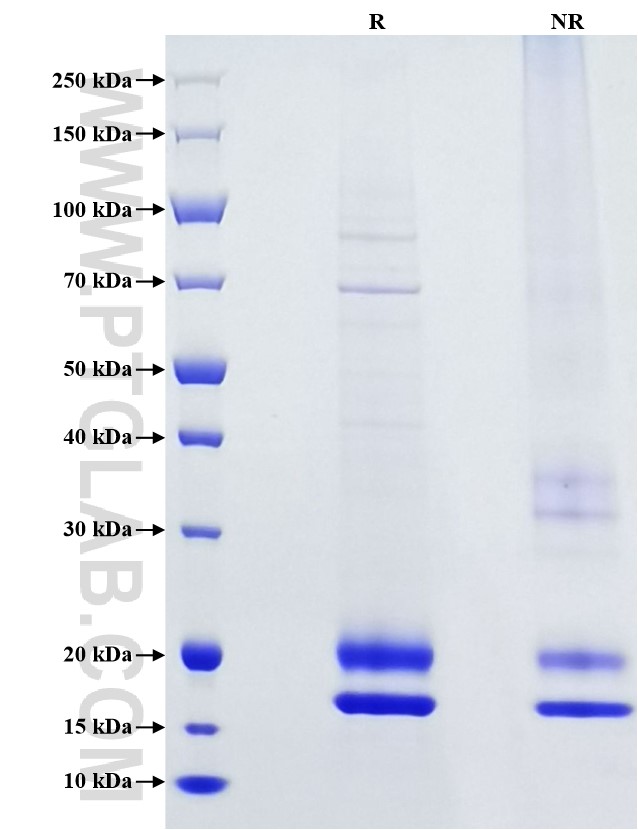Recombinant Mouse IL-1RA protein (His Tag)
种属
Mouse
纯度
>90 %, SDS-PAGE
标签
His Tag
生物活性
未测试
验证数据展示
产品信息
| 纯度 | >90 %, SDS-PAGE |
| 内毒素 | <0.1 EU/μg protein, LAL method |
| 生物活性 |
Not tested |
| 来源 | HEK293-derived Mouse IL-1RA protein Arg8-Gln159 (Accession# Q542W1) with a His tag at the C-terminus. |
| 基因ID | 16181 |
| 蛋白编号 | Q542W1 |
| 预测分子量 | 18.4 kDa |
| SDS-PAGE | 16-21 kDa, reducing (R) conditions |
| 组分 | Lyophilized from 0.22 μm filtered solution in PBS, pH 7.4. Normally 5% trehalose and 5% mannitol are added as protectants before lyophilization. |
| 复溶 | Briefly centrifuge the tube before opening. Reconstitute at 0.1-0.5 mg/mL in sterile water. |
| 储存条件 |
It is recommended that the protein be aliquoted for optimal storage. Avoid repeated freeze-thaw cycles.
|
| 运输条件 | The product is shipped at ambient temperature. Upon receipt, store it immediately at the recommended temperature. |
背景信息
IL-1Ra, also known as IL-1F3, is a member of the interleukin 1 cytokine family. It is a receptor antagonist of IL-1, can competitively bind with IL-1R1 thereby blocking cell activation by the cytokine. IL-1Ra is secreted by various types of cells including immune cells, epithelial cells, and adipocytes, and is a natural inhibitor of the pro-inflammatory effect of IL1β. This protein inhibits the activities of interleukin 1, alpha (IL1A) and interleukin 1, beta (IL1B), and modulates a variety of interleukin 1 related immune and inflammatory responses, particularly in the acute phase of infection and inflammation. As a potent immune/inflammatory molecule, IL-1Ra is tightly associated with osteomyelitis, rheumatoid arthritis, traumatic brain injury (TBI) and stroke. Recently, an increasing number of studies proved that IL-1Ra is also actively involved in tumor progression, such as high expression IL-1Ra increased the risk of bladder cancer and non-cardia gastric carcinoma.
参考文献:
1. Stephane Perrier.et al. (2006) FEBS Lett. 580(27):6289-94. 2. Charles A. Dinarello. et al. (2020) Immunol Rev. 281(1):8-27. 3. Ivona Aksentijevich. et al. (2009) N Engl J Med. 360(23):2426-37. 4. C Grond-Ginsbach. et al. (2008) J Neurol. 255(5):723-31. 5. Gifone Aguiar Rocha. et al. (2005) Int J Cancer. 115(5):678-83. 6. Zhibin Hu. et al. (2006) Cancer Lett. 236(2):269-75.


